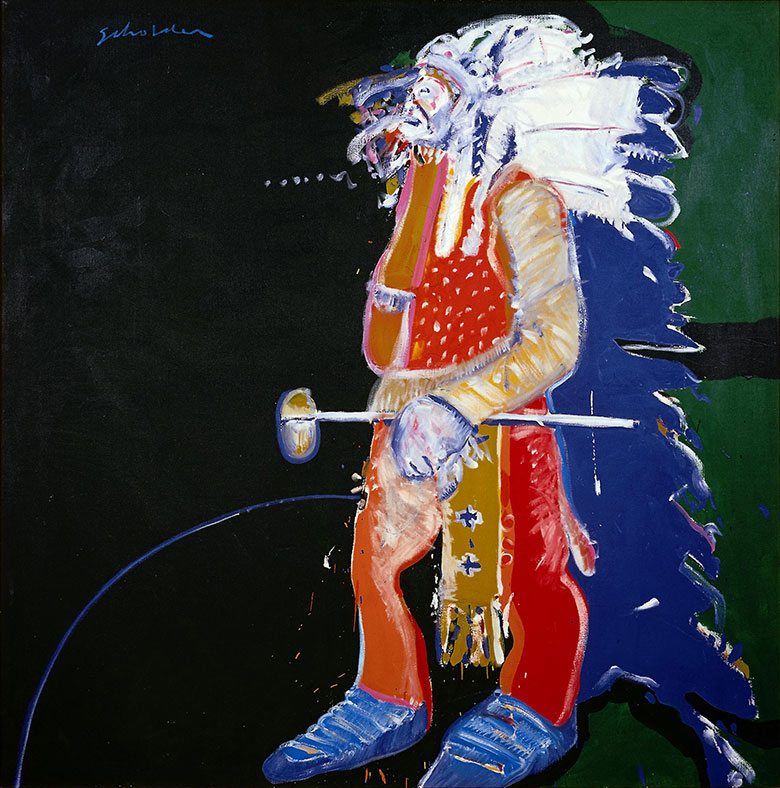Originally featured in Points West in Winter 2013
Indian with Tomahawk by Fritz Scholder
Throughout his life, Fritz Scholder refused to self-identify as a Native American, although he is one-quarter Luiseño, a California Mission tribe. Despite his disavowal, Scholder maintained ties to his roots, participating in the Rockefeller Indian Art Project at the University of Arizona and influencing subsequent generations of Native artists through his work. Scholder’s conflicting feelings toward his native identity and the plight of the contemporary Native American were borne out in his series of Indian paintings, completed between 1967 and 1980. His Indian with Tomahawk from 1970 is an early work from the series. In the painting, Scholder draws attention to the trite characteristics of native identity through the use of exaggeration. The gross proportions of the war bonnet, moccasins, and the figure’s hand—carrying a tomahawk—emphasize “otherness” and portray the perceptual constraints on the developmental growth and transformation of tribal identity.
Consistent across Scholder’s body of work is his interest in drawing out expression and emotion through color blocking. By using color for both the figural outline and the figure itself, the artist draws a link between himself and the German expressionists.
Scholder, Fritz (1937 – 2005). Indian with Tomahawk, 1970. Oil on canvas: William E. Weiss Contemporary Art Fund. 15.77
Post 053






